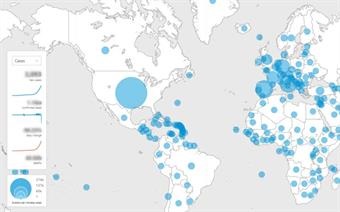Sexual and reproductive health and rights
Policy portal
Sexually transmitted infections data
Jonathan Torgovnik
Sexually transmitted infections (STIs) are a major public health problem globally, particularly in low- and middle-income countries.
It is difficult to estimate the global burden of STI precisely because of asymptomatic infections, the absence of reliable and affordable diagnostic tools, and weak STI surveillance in many countries. WHO estimates that 376 million new cases of curable STIs (syphilis, gonorrhoea, chlamydia and trichomoniasis) occurred worldwide in 2016 among adults aged 15-49 years. In addition, long-lasting or lifelong viral STIs human papillomavirus (HPV) and herpes simplex virus (HSV) affect hundreds of millions of people globally at any point in time.
If STIs are not addressed, they can have a major impact on sexual and reproductive health. Congenital syphilis results in over 200,000 stillbirths and neonatal deaths each year. HPV causes over 300,000 cervical cancer deaths annually. STIs can also lead to infertility, increased vulnerability to HIV, and pregnancy complications. Gonorrhoea antimicrobial resistance is an increasingly urgent threat to STI control.
All STIs are preventable, and most can be cured or treated effectively. STI prevention and case management are the cornerstone of STI control. Prevention tools such as HPV vaccines, point-of-care diagnostics such as those used to detect syphilis in pregnancy, and appropriate clinical management algorithms can break the chain of STI transmission.
However, despite availability of many STI tools and interventions for years, more public health attention and action is needed, including appropriate policies and strategies, to decrease the global burden of STIs.
For questions or more information, please contact sis@who.int.





